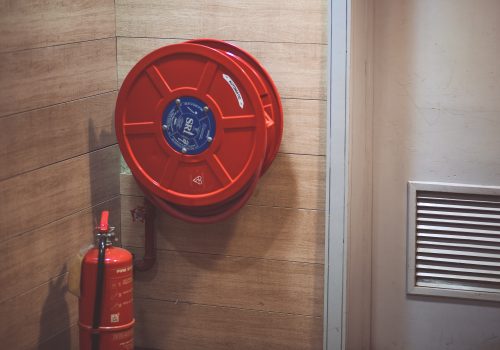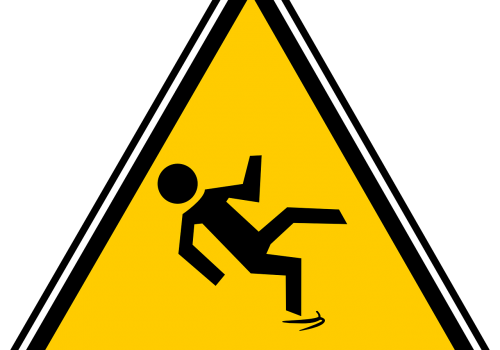
Biggest Household Safety Hazards that You are Unknown About in Nepal
Home is the one place you feel safe. But, sometimes it may be the case that you aren’t as secure as you think you are. Various household hazards might be persisting in your place that you are unknown about.
We are not only talking about risks like fires and natural disasters, but also the ones that affect your health. Well, to make sure that your house is always safe for you, we list some of the most common and risky household hazards that people usually turn a blind eye on.
Mold
Mold grows when your house has a lot of moisture. This could be because of leaking pipes, damp in stairs and floor, or rain leaking in from say, window frames. Also, mold can be a very common occurrence in a recently constructed house where the water is still drying out.
The thing is that we Nepalis are so used to the dust and dirt outside our home due to which we can ignore the cleaning the indoors as well. This is to say that many of us don’t clean our house as much as we have to.
Dirt in the home; especially molds carry a lot of health risks. Inhaling the spores can cause inflammation in the airways, nasal congestion (blocked nose), chest tightness, wheezing, throat irritation, and many more. Also, if you don’t address the high level of mold in your area for a long time, it increases your chances of getting chronic health problems like asthma due to reduced lung capacity.
Well, indeed, mold doesn’t immediately cause these effects in the average healthy problem, but it will create a problem if it gets to get inside your system for a prolonged time. Molds are the riskiest for households with children.
The mold consists of an earthy smell. You can keep it away by keeping your home dry and clean. On the other hand, buying an air purifier can be an excellent thing to do.
Fire
Fire is another one of the riskiest unknown household hazards you should know about. According to the Nepal National Emergency Operation Center, there were 2478 fire incidents in Nepal in 2018. Moreover, fires destroyed in 1857 and damaged 291 houses.
We searched for, but couldn’t find the official indications for 2019 and 2020, but we can easily say the numbers are not very different.
If we are talking specifically about Nepal, people just aren’t as careful and concerned about fire safety regulations in their houses as they should be. Of course, they are conscious, but it is just not enough. Most of the houses don’t even have a fire extinguisher.
Moreover, older model houses are more prone to fire damages.
Being careful is the best thing to do to decrease fire risks in your household. You need to blow off the candles after each power cuts, don’t leave food unattended while cooking, keep flammable items away from fire source, and be extra careful with every electrical appliance.
Make sure that appliance malfunction, short in the circuit and overheated equipment can also cause fires. Every kind of appliance, from a washing machine, microwave oven, heater, gas geyser may contribute to fire if you don’t handle them properly.
Another thing you can do is never smoke inside your home; it will be helpful against fire and also for your family’s health.

Slippery Surfaces
This mostly comprises the bathroom floor and other areas that are in constant contact with water. Tile and marble surfaces can be very slippery and we don’t need to tell the worst-case scenario in case someone falls down.
A lot of people every year get severely injured by falling in the bathroom. This can be in the form of fractured bones or wounds in the head. Moreover, the risk increases when you have a bathtub, as it is one of the most slippery things in a house.
The risks are more pertinent in a house with children and the elderly. For the best safety, you can install grab bars in slippery areas. Also, you need to wipe every wet surface. It will be best if you can place mats where you can; for example, below the sink.
Also, don’t forget to choose the right marble and tile surfaces for your house, including the basement, bathroom, and kitchen.
Carbon monoxide poisoning
Carbon monoxide (CO) is a silent killer. It is a gas that is produced by combustion. Mostly, gas stoves and fireplaces, and home appliances such as refrigerators, water and space heaters, etc. form it as a byproduct.
Carbon monoxide, when it gets into our system, binds hemoglobin (Red Blood Cells), due to which, oxygen can’t find its way in. Due to this, symptoms such as the flu, loss of balance, vision, consciousness, etc., occur. All of it could be mild at first, but in the long-term, you can have hearth problems if you keep on inhaling the gas.
Remember, people actually die from accidental CO poisoning. The gas has no smell. Our senses can’t distinguish between it and other gases due to which we can’t know when we breathe it in.
To be safe, you need proper ventilation in your home and for the electric appliances. Also, you need to regularly clean the heat sources. Build a garage outside the living area and don’t start engines inside, as they release the gas as well. Be sure to visit a medical practitioner if you have unknown symptoms and doubts.
Suffocation
We don’t very often hear about suffocation like the others, but it happens. And when it does, it is extremely dangerous.
In our article, we can say there are two causes of suffocation; one is the structure of the house, and another is the things present in the house.
For the first part, you need to have proper ventilation so that there is enough space for air to get in. Don’t put a lot of indoor plants and if close fan heaters when you go to sleep.
For the next part, mostly children are prone to suffocation and strangulation because of the things inside the house. Plastic bags and wires are the biggest culprits to it, and sometimes, blanket.
We recommend you read another article on your website, how to keep your house kids-friendly to get more insights regarding it.
Falls
Falls themselves are the biggest reason for death because of household accidents. We have already talked about slippery surfaces and to make this article more straightforward, we are going to discuss staircases and the veranda, including the roof.
For the staircases, assure there is good lighting and the handrails are solid. Ensure the rails have a good height; they need to keep your children safe. Also, it will be a great idea to place soft carpets on the stairs if you have kids, as they will minimize the damage in case someone tumbles down. To help you, we have this article on our website: How to Choose the Right Carpet for Your House in Nepal.
Do the same for your veranda and roof; for the rails, consider more about safety than design. Also, be careful about where and where not to let kids go around.

Conclusion: There are a lot of uncalled house hazards that you need to keep an eye on. Well, for the most part, there is one word, ‘careful.’ You can avoid a lot of risks if you know what might occur, and have prevention measures in place.
This was it for this article. You can let us know if you want us to add more points or have any inquiries. We have our contact on this page and you can visit our listings to view homes for sale in Nepal.